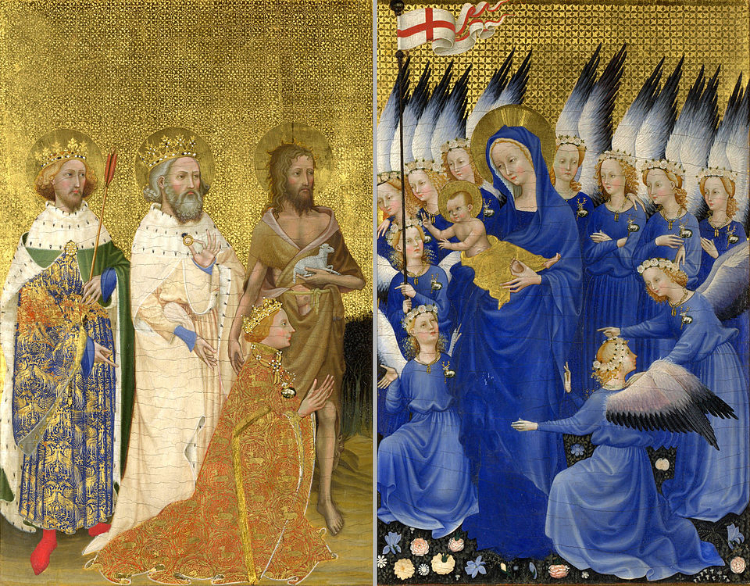The Wilton Diptych

The Wilton Diptych
The Wilton Diptych is a two-panel painting (hence the name diptych) showing the coronation of England's Richard II. It was painted in the late Medieval period, shortly before the 15th century, and is a representative painting of its time in both theme and style.
Medieval paintings focused heavily on religious iconography, almost to the exclusion of all other themes. In this particular painting, Richard II is receiving blessings from the Christ child, while the former is surrounded by Edmund the Martyr, Edward the Confessor (both representatives of English history), and John the Baptist, to show his strong devotion to the Church (as though receiving a blessing from Christ himself isn't a strong enough sign of devotion).
Though the image shows an auspicious beginning for Richard II, he was starved to death while imprisoned after being deposed from the throne. Medieval England wasn't a happy place to be, even if you're a king being blessed by the baby Jesus.
Just because someone didn't understand medicine didn't mean they didn't understand bling.
Though form and composition were viewed as more simplistic in medieval paintings vs. their Renaissance descendants, that doesn't mean attention to detail was lacking or that the artists were otherwise cutting corners.
The seemingly plain gold background on the left panel is actually gold leaf that was painstakingly worked into a lattice pattern using a metal punch. The other colors used in the painting included a blue sourced from lapis lazuli and an equally exquisite vermillion for Richard II's red robe.
When it comes to financing a painting about your life, it's certainly good to be king!
Painting - medieval style!
The Wilton Diptych is a typical representation of the medieval period. As with most paintings of the time, its theme is heavily centered on religion. It further emphasizes the point by drawing literal halos around many of its subjects. The background of the painting is plain, and there's little attention to linear perspective to make the painting appear more realistic.
This was done by design. The Middle Ages were a deeply religious period, and the focus of art was on the spiritual realm, not the earthly one. Paintings emphasized this focus to the point of bluntness. In addition, the Church was concerned that if painting subjects were too realistic, viewers would be inclined to indulge in idolatry and worship the painting itself rather than the holy figures represented therein.
